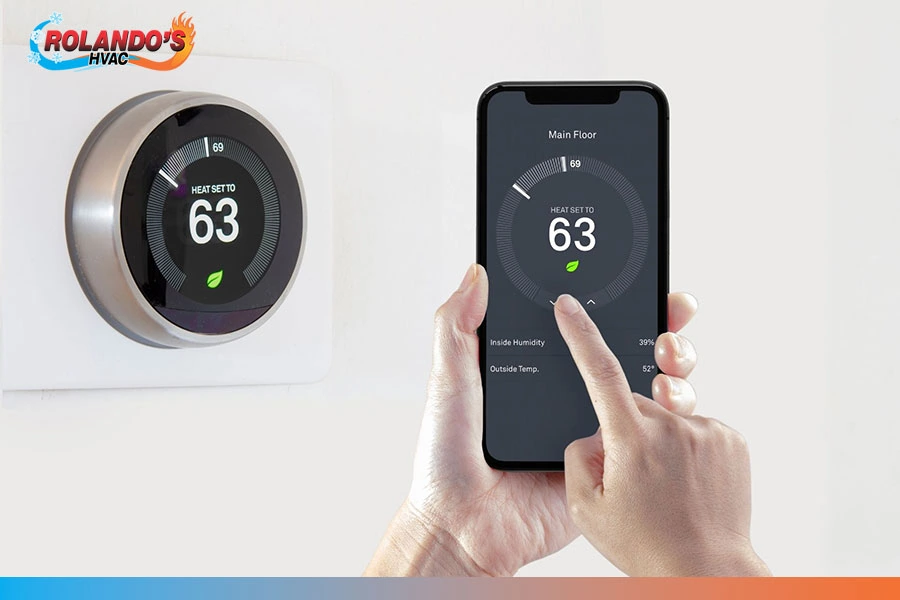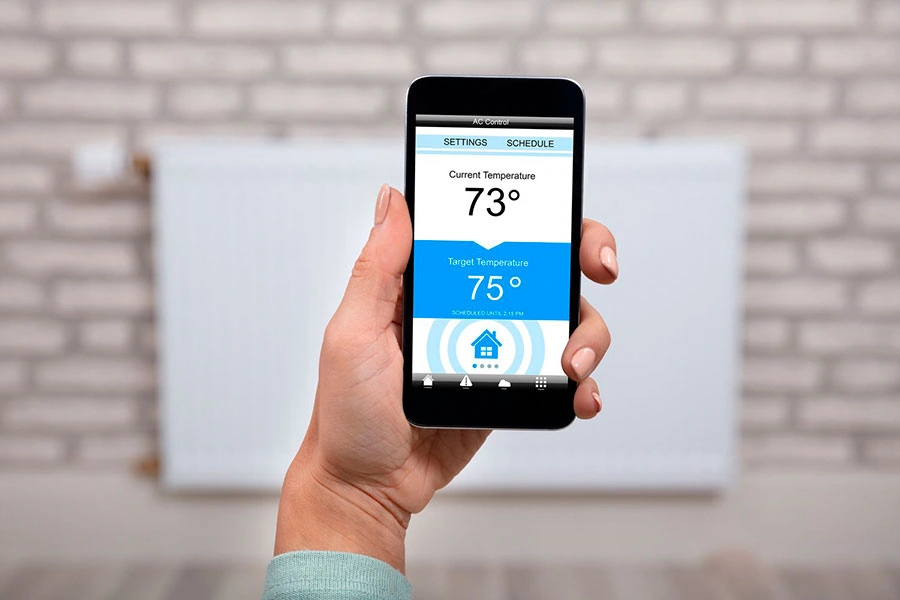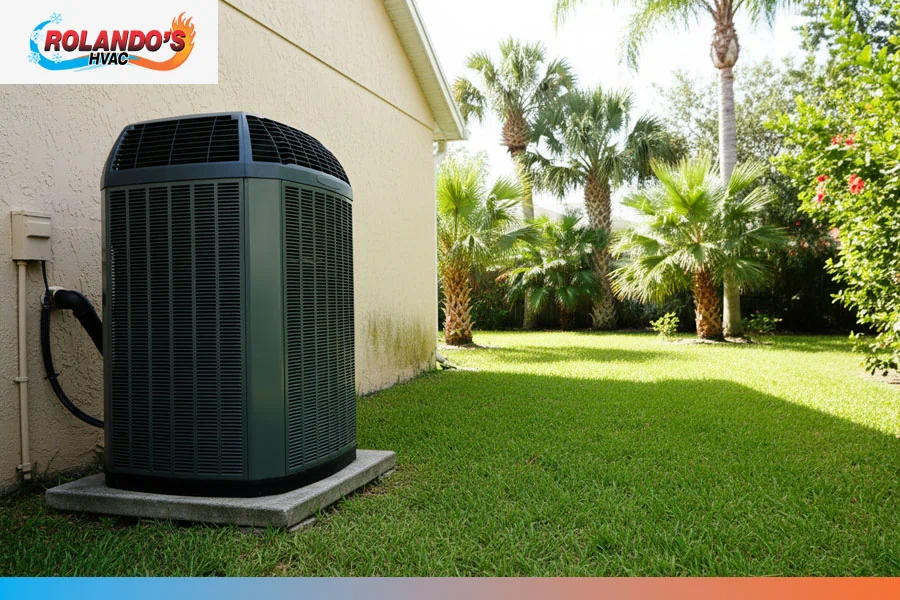
June 15, 2025
Smart Thermostats and AC Efficiency: Do They Really Save You Money?
Yes, smart thermostats save money — especially in Tampa’s hot, humid climate. These devices often cut cooling and heating costs by 10–20% with better temperature control, automated schedules, and remote access that support energy conservation and boost thermal efficiency.
In Tampa’s long cooling season, more homeowners are pairing smart thermostats with a new ENERGY STAR® air conditioning system installation to improve comfort and lower electricity bills. If you're exploring energy-saving upgrades, don’t miss our blog on how energy-efficient air conditioners work.
This guide breaks down how smart thermostats work, how much they save, and when it makes sense to combine one with a high-efficiency AC unit.
What is a Smart Thermostat?
A smart thermostat is a more advanced version of a standard programmable thermostat. Both let you schedule temperature changes in advance, but smart thermostats use learning algorithms and automation to optimize comfort and energy efficiency.
Most models offer:
- Wi-Fi control through a mobile app
- Remote access from your smartphone or tablet
- Integration with Amazon Alexa, Google Assistant, Apple HomeKit, SmartThings, and Resideo
- Voice control via your smart speaker (Amazon Echo or Google Nest Hub)
Popular brands include:
Ecobee3 Lite, Google Nest Thermostat, Honeywell WiFi Thermostat, Emerson Thermostat, Sensi Smart Thermostat
Even modest improvements in energy consumption add up over time—and many smart thermostats qualify for rebates or tax credits, boosting your return on investment.
💡 Interested in upgrading your air conditioner but concerned about cost? Check out HVAC financing options from Rolando’s HVAC.
How Do Smart Thermostats Improve AC Efficiency?
Smart thermostats help your air conditioning system run more efficiently by adjusting temperature cycles based on real-time conditions, your schedule, and local weather patterns. To access these features, your thermostat must be connected to the internet.
Here’s how they help:
- Reducing short cycling – prevents the AC from turning on and off too frequently, which wastes energy and causes wear on the system
- Maintaining comfort – keeps indoor temperature steady without sharp fluctuations
- Managing indoor humidity and airflow – improves indoor air quality and comfort, especially important in Tampa’s high-humidity climate
- Using smart sensors and AI – adapts to your daily routine using a virtual assistant, geofence to detect when you're home and weather forecasts to fine-tune performance across different zones
By coordinating with components like your heat pump, air handler, and thermostat, these devices can significantly reduce energy consumption and improve your system’s seasonal energy efficiency ratio (SEER). They also help lower peak demand during high-usage periods, reducing stress on the electrical grid and promoting long-term sustainability.
Does A Smart Thermostat Really Save Money?
Yes—especially in Florida’s long cooling season, where AC runs nearly year-round. Studies from the U.S. Department of Energy and ENERGY STAR® show most homeowners save 10–20% on heating and cooling costs when using a smart thermostat as part of a broader home automation system.
In Tampa, your actual savings depend on:
- The age and SEER rating of your current air conditioner
- Regular maintenance and proper building insulation
- How consistent your energy habits are (automated vs. manual usage)
- Whether your smart thermostat is integrated with other home improvement upgrades like a heat pump, solar power, or zoned controls
Even modest home improvement projects in energy consumption add up over time—and many smart thermostat products qualify for rebate or tax credits, boosting your return on investment.
Can You Replace Your Current Thermostat with a Smart Thermostat?
Yes—but it depends on your wiring.
Most smart thermostats require a C-wire (common wire) for continuous power. Some older homes may not have this wire, which can limit compatibility. However, newer models like the Nest Thermostat and Ecobee offer solutions for homes without a C-wire, using a power extender kit or adapter module.
Not sure what you’re working with? A quick visit from an HVAC contractor can save time and avoid wiring headaches—especially if:
- You rely on advanced ventilation, multi-zone system, or zoning controls
- You use a heat pump
- Your system includes indoor air quality systems like a humidifier, dehumidifier, or air purifier
Rolando’s HVAC offers expert thermostat installation in Tampa. Contact us here for more information.
Best Smart Thermostat Features to Look For
The features on a smart thermostat can vary a lot—so it helps to know what to look for. Here’s what to prioritize when shopping for one:
- Remote access via smartphone app
- Learning capabilities that adapt to your behavior
- Compatibility with your HVAC system (including split system, gas furnace, and air source heat pump)
- Voice control through Alexa, Google Assistant, Siri, or a touchscreen
- Integration with smart home ecosystems like SmartThings, Apple HomeKit, or your existing smart speaker setup (such as Amazon Echo or Google Nest Hub)
- Optional smart sensor(s) for better room-by-room comfort
- Features like a geofence, air quality monitoring, and motion detection

How Much Does a Smart Thermostat Cost in Tampa?
Smart thermostat prices can vary significantly by model and features. Here’s a general range:
- Thermostat unit: $150 to $350+
- Installation: $100 to $300 (depending on wiring complexity and system compatibility)
There may also be rebate(s) or tax credit(s) available under the Inflation Reduction Act or local energy efficiency programs.
Budgeting for a new thermostat? Rolando’s HVAC offers affordable financing options to help spread out the cost.
Do I Need an Electrician or HVAC Pro to Install a Smart Thermostat?
It depends on your system—and how comfortable you are handling wiring.
You can probably install it yourself if:
- You already have a C-wire for power
- Your system is fairly simple (like a one-zone setup without a humidifier or dehumidifier)
It’s best to call a pro if:
- You’re unsure about your system’s wiring
- Your setup includes a boiler, natural gas, heat pump, or multiple zones
- You want to make sure everything’s covered under warranty and properly configured
Not sure if your setup qualifies for DIY or pro installation? Rolando’s HVAC offers quick, affordable programmable thermostat installation for Tampa homeowners—so you don’t have to guess.
Smart Thermostat FAQ
Is it worth having a smart thermostat?
Yes—especially in warm climates like Tampa. A smart thermostat can increase your home's comfort, reduce energy consumption, and extend the life of your HVAC system. Pair with regular system maintenance for even better savings.
Can you replace any thermostat with a smart thermostat?
Most, but not all. Check for a C-wire or consult a technician for compatibility.
What is the best smart thermostat brand?
Top brands include Google Nest, Ecobee, and Honeywell—each with different strengths in learning, sensors, and integration.
Does a smart thermostat work with all air conditioning systems?
Most are compatible with standard HVAC systems, but consult a pro if you have a heat pump, boiler, or specialty setup.
What’s the best SEER rating for smart thermostats?
Smart thermostats work best when paired with high-efficiency air conditioners that have a strong SEER2 rating and high AC efficiency ratings. Learn more in our blog on air conditioning SEER rating and HVAC efficiency ratings.
Thinking about upgrading to a smart thermostat?
Whether you're looking to improve energy efficiency, gain more control over your indoor comfort, or simply explore what's possible with today's connected home tech—Rolando’s HVAC is here to help.
Call (813) 373-6804 or schedule your installation today.
Most smart thermostat installations are completed same-day, subject to technician and part availability.

Rolando Mojarrieta is the founder of Rolando’s HVAC, a licensed HVAC contractor based in Town ‘n’ Country and serving the greater Tampa Bay area. With over 15 years of experience in residential air conditioning, heat pump installations, and energy-saving upgrades, Rolando is committed to helping Florida homeowners stay comfortable year-round. License #CAC1820272.

December 1, 2025
Why Is My AC Freezing Up in Tampa, FL?

November 15, 2025
Heat Pump Maintenance in Lakeland, FL: Tips for Florida Homes

November 10, 2025
